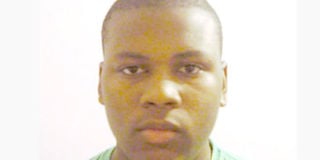Federer’s long layoff is a reminder to always cherish him

Tumaini Carayol
What you need to know:
- It is the type of audience he is going to have to get used to. The last time Federer was televised on a tennis court, he and his old rival Rafael Nadal hugged as they broke the record for the sport’s highest attendance when 51,954 spectators packed tightly together to watch his Match in Africa tennis exhibition in Cape Town in February last year. He returns to an entirely different world.
In the days leading up to his return to competition at the Qatar Open this week after two knee surgeries and a 13-month layoff, the longest of his life, Roger Federer made his first public appearance at the tournament in the humble surroundings of an Instagram Live Q&A session with a group of local children.
He spoke as he often does, pleasantly and expansively, but there was one curiosity. Despite the fact he is the most popular tennis player in the world, who can organise an army of followers with the click of his fingers, just 150 people were watching.
It is the type of audience he is going to have to get used to. The last time Federer was televised on a tennis court, he and his old rival Rafael Nadal hugged as they broke the record for the sport’s highest attendance when 51,954 spectators packed tightly together to watch his Match in Africa tennis exhibition in Cape Town in February last year. He returns to an entirely different world.
All of the adjustments Federer will have to make as he grows accustomed to the realities of competing during a pandemic – the bubbles, quarantines, limited team members allowed to accompany players and the anxiety of catching the virus – have been of interest to many.
However, as he prepared to face Britain’s Dan Evans or Jérémy Chardy of France in his first official match since January 2020, it was clear from his pre-tournament press conference on Sunday that the only thing that matters is his knee.
It has taken a considerable effort for Federer simply to return to the courts. He has undergone two arthroscopic surgeries on his right knee, first in February and then in June after his recovery had not sufficiently progressed.
When he decided that he had finally to address his eroding knee, he never imagined it would take so long for him to compete again. After the complications that followed, he had to “start from scratch, right from the bottom up” and the sharp decline of his knee after the first surgery took its toll.
“I was not doing well,” he said. “I would go for a walk with the kids, or go for a bike ride and come back, and I would have a swollen knee and I wouldn’t understand what was happening because training was actually going very well for the first four or five weeks and progress was quick. I was down. I couldn’t believe I had to do a second one. This is a moment when you question everything a little bit more.”
While Federer is now “injury-free, pain-free”, everything else is surrounded by questions he cannot answer until he returns to the court. Each flight, practice, and lengthy match will tell what his knee can handle and how long his career can endure.
“That’s the only real concern I have: ‘Is the knee going to hold up?’ As of now I’m not sure. I did everything I possibly could otherwise I would not put myself in this position here in Doha but a lot to look forward to and some uncertainties which is normal when you’ve been out for so long.”
And so Federer returns to competition playing the long game. He intends to compete during the clay court season but he is only hoping to be at 100 percent by Wimbledon at the end of June. If his knee allows him to, Federer will continue to hope more success is possible, particularly on grass.
His intentions were embedded in the congratulatory note to Rafael Nadal he published after the Spaniard equalled Federer’s record 20 grand slams by winning Roland Garros last October: “I hope 20 is just another step on the continuing road for both of us,” he wrote.
The tennis world has also changed since Federer’s last match. His first steps back into competition coincide with the loss of another of his treasured records. Novak Djokovic entered 311th week as ATP No 1 in February, moving him above Federer.
If Djokovic wins his 19th major at Roland Garros, he will be breathing down Federer’s neck.
Tumaini Carayol is a blogger focusing on mainly tennis and a sports writer with the Guardian, UK




